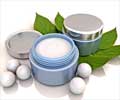A new study has found that an antioxidant present in berries could help fight skin damage due to ultraviolet (UV) rays.
A new study has found that an antioxidant present in berries could help fight skin damage due to ultraviolet (UV) rays.
So, the latest beauty cream that can be added in a woman's skin care regimen can be found in berries.Using a topical application of the antioxidant ellagic acid, researchers at Hallym University in the Republic of Korea markedly prevented collagen destruction and inflammatory response, major causes of wrinkles, in both human skin cells and the sensitive skin of hairless mice following continuing exposure to UV-B, the sun's skin-damaging ultraviolet radioactive rays.
Ji-Young Bae, a graduate student in the laboratory of Dr. Young-Hee Kang, presented results of the two-part study on April 21, at the Experimental Biology 2009 meeting in New Orleans. The presentation was part of the scientific program of the American Society for Nutrition.
Ellagic acid is an antioxidant found in numerous fruits, vegetables and nuts, especially raspberries, strawberries, cranberries and pomegranates. Earlier studies have suggested it has a photoprotective effect.
The Kang laboratory found that, in human skin cells, ellagic acid worked to protect against UV damage by blocking production of MMP (matrix metalloproteinase enzymes that break down collagen in damaged skin cells) and by reducing the expression of ICAM (a molecule involved in inflammation).
The scientists then turned to young (four weeks), male, hairless mice, genetically bred types of mice often used in dermatology studies because of the physiological similarities of their skin to that of humans. For eight weeks, the 12 mice were exposed to increasing ultraviolet radiation, such as that found in sunlight, three times a week, beginning at a level sufficient to cause redness or sunburn and increasing to a level that would have definitely caused minor skin damage to human skin.
Advertisement
Following the analyzes, the mice exposed to UV radiation without the ellagic acid treatment developed wrinkles and thickening of the skin, the researchers found.
Third, as suggested in the study of human cells, the ellagic acid reduced inflammatory response and MMP secretion due to protection from the degradation of collagen. The ellagic acid also helped prevent an increase of epidermal thickness.
The researchers say the results demonstrate that ellagic acid works to prevent wrinkle formation and photo-aging caused by UV destruction of collagen and inflammatory response.
Source-ANI
ARU














